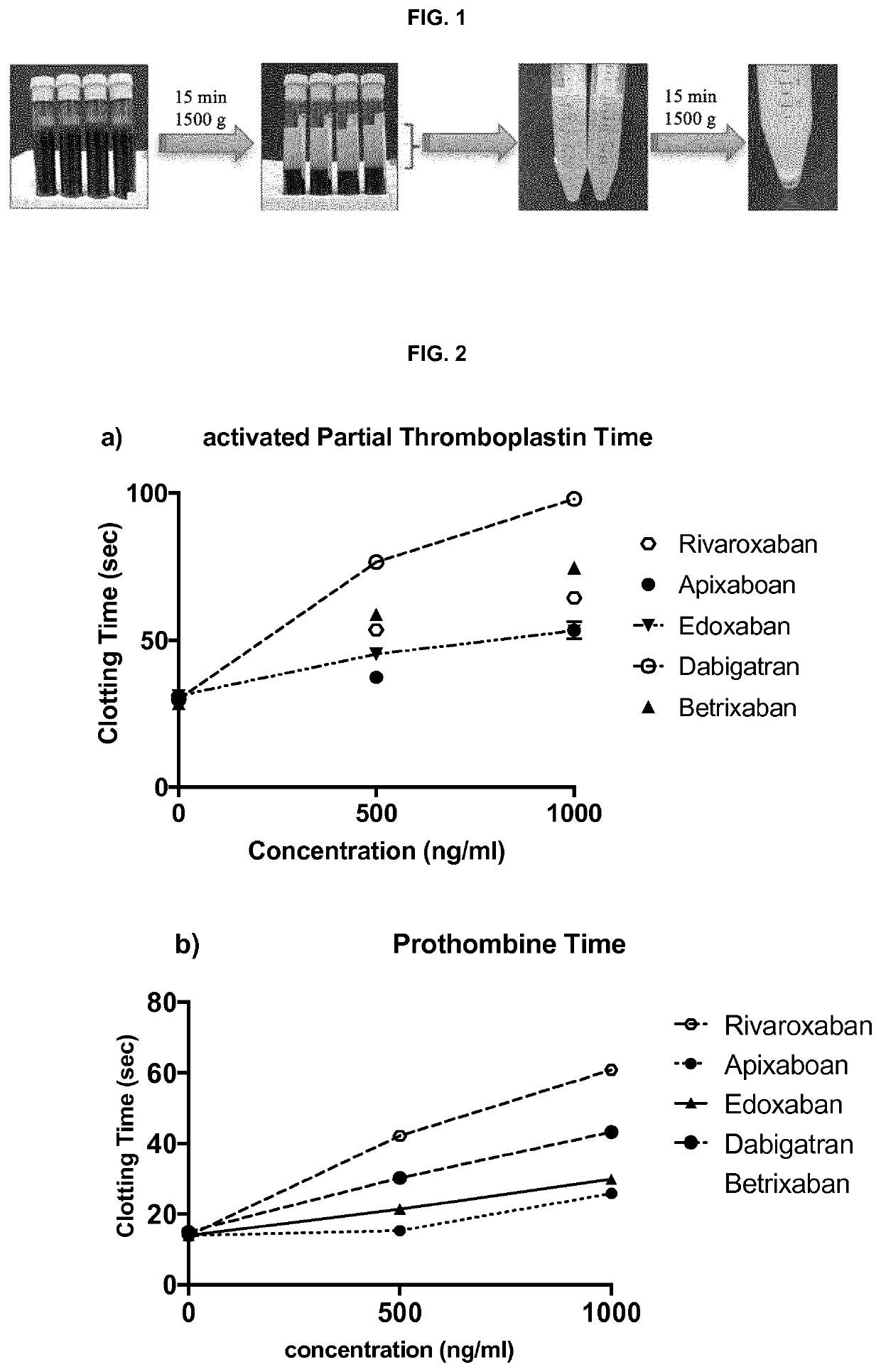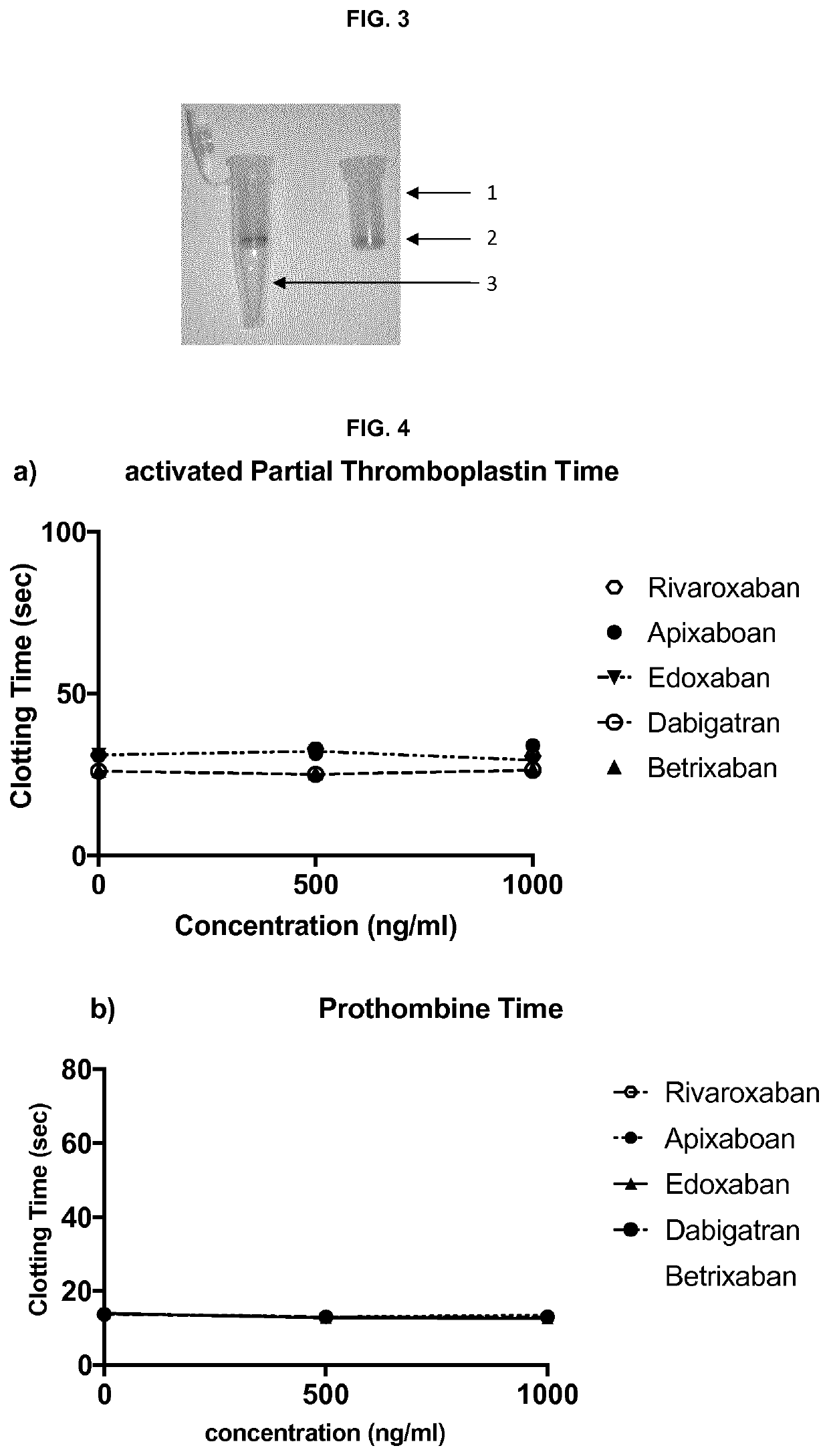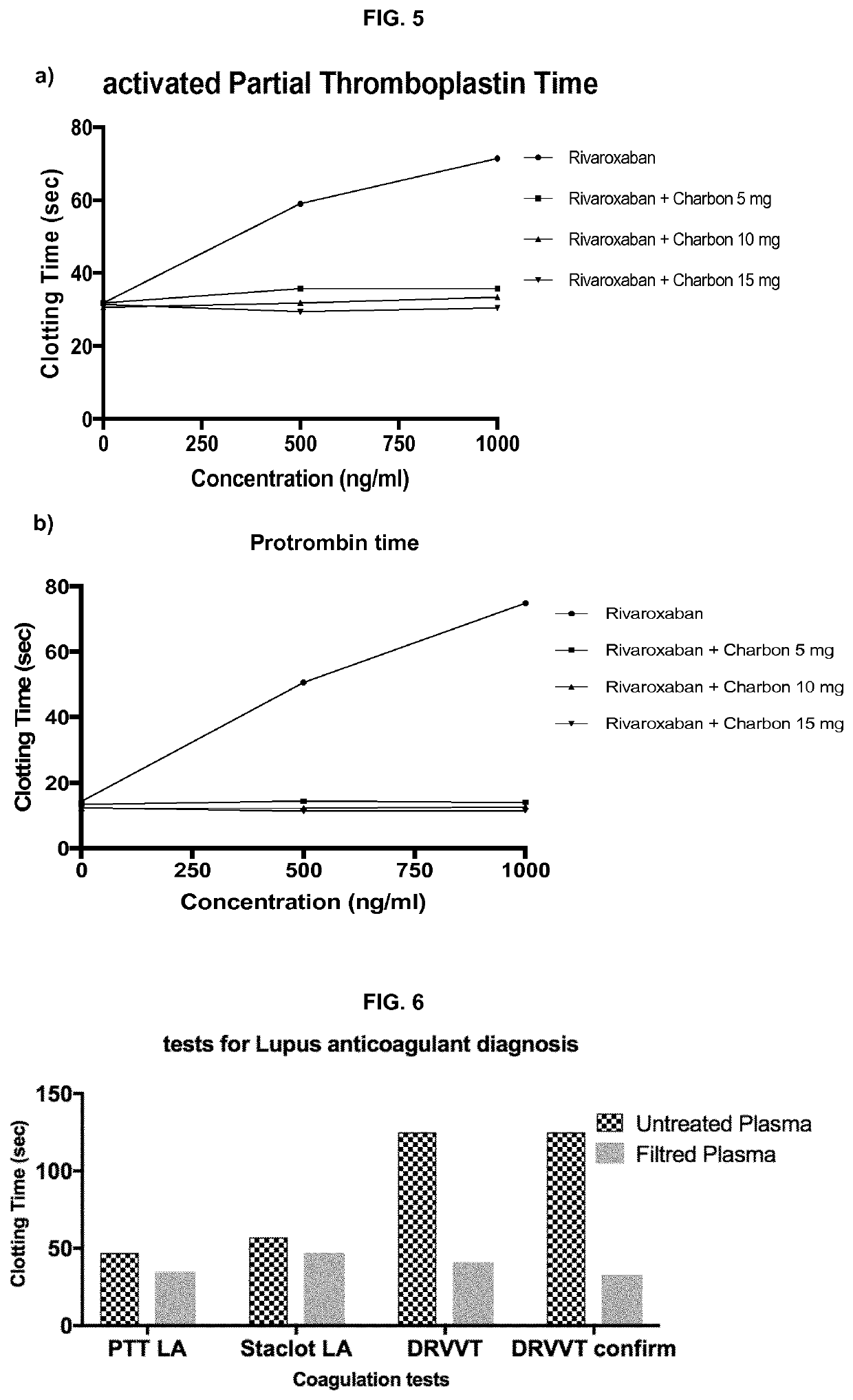Method for diagnosing haemostasis disorders using activated charcoal
a technology of activated charcoal and haemostasis, which is applied in the direction of material testing goods, biochemistry equipment and processes, instruments, etc., can solve the problems of unprovoked venous thromboembolism patients with a high risk of recurrence, complicated interpretation of results, and inconvenient use, so as to achieve accurate detection
- Summary
- Abstract
- Description
- Claims
- Application Information
AI Technical Summary
Benefits of technology
Problems solved by technology
Method used
Image
Examples
example 1
of DOACs Present in a Serum Sample on aPTT and PT Assays for In Vitro Diagnosis of a Haemostasis Disorder
[0154]Standard tests for in vitro diagnosis of a haemostasis disorder, for example in hospital laboratories, are generally performed on plasma samples obtain from a patient. For the preparation of such plasma samples, blood components of a blood sample from a patient are typically separated by two centrifugation steps, both at 2500 g for 15 min (FIG. 1). The first centrifugation step will separate the blood in solid substances (e.g. red and white blood cells) (i.e. the lower phase) and blood plasma (i.e. upper phase). Subsequently, the blood plasma is collected and submitted to a second centrifugation step, which pelletizes the residual blood cells and / or platelets. The upper phase obtained by the second centrifugation step (i.e. platelet-poor plasma) can be used for haemostatic tests. However, the platelet-poor plasma obtained by standard methods will comprise direct anticoagula...
example 2
d as Disclosed Herein Removes the Influence of DOACs on aPTT and PT Assays for the In Vitro Diagnosis of a Haemostasis Disorder
[0156]A blood sample obtained from a subject was centrifuged at 2500 g during 15 min to separate the blood into solid substances (e.g. red and white blood cells) (i.e. lower phase) and blood plasma (i.e. upper phase).
[0157]The plasma obtained from the first (and only) centrifugation step was incubated with activated charcoal (10 mg / ml of plasma) for 5 minutes and the plasma was subsequently recovered from the activated charcoal by passing the plasma through a filter with 0.65 μm pores (FIG. 3). Passing the plasma through the filter was achieved by a short centrifugation. The filter with 0.65 μm pores allowed to efficiently remove the activated charcoal and residual blood cells and / or platelets, which have a larger size than 0.65 μm, from the plasma with a minimal interference with blood coagulation tests.
[0158]Accordingly, it appears that recovering the plas...
example 3
the Concentration of Activated Charcoal on the Elimination of the Influence of DOACs on aPTT and PT Assays
[0160]Plasma was obtained by centrifuging once a blood sample obtained from a subject as described in Example 2. The plasma sample was incubated with different concentrations of activated charcoal (i.e. 5 mg / ml, 10 mg / ml or 15 mg / ml) for 5 minutes and the plasma was subsequently recovered from the activated charcoal by passing the plasma through a filter with 0.65 μm pores and activated charcoal by a short centrifugation.
[0161]The filtered plasma sample was used in aPTT and PT assays. The results hereof show that the effect of Rivaroxaban on the aPTT and PT assays was completely removed, even at high concentrations of Rivaroxaban, such as 1000 ng / ml (FIGS. 5a and 5b). Furthermore, 5 mg of activated charcoal / ml was already sufficient to obtain this effect.
PUM
| Property | Measurement | Unit |
|---|---|---|
| pore size | aaaaa | aaaaa |
| concentration | aaaaa | aaaaa |
| volume | aaaaa | aaaaa |
Abstract
Description
Claims
Application Information
 Login to View More
Login to View More - R&D
- Intellectual Property
- Life Sciences
- Materials
- Tech Scout
- Unparalleled Data Quality
- Higher Quality Content
- 60% Fewer Hallucinations
Browse by: Latest US Patents, China's latest patents, Technical Efficacy Thesaurus, Application Domain, Technology Topic, Popular Technical Reports.
© 2025 PatSnap. All rights reserved.Legal|Privacy policy|Modern Slavery Act Transparency Statement|Sitemap|About US| Contact US: help@patsnap.com



